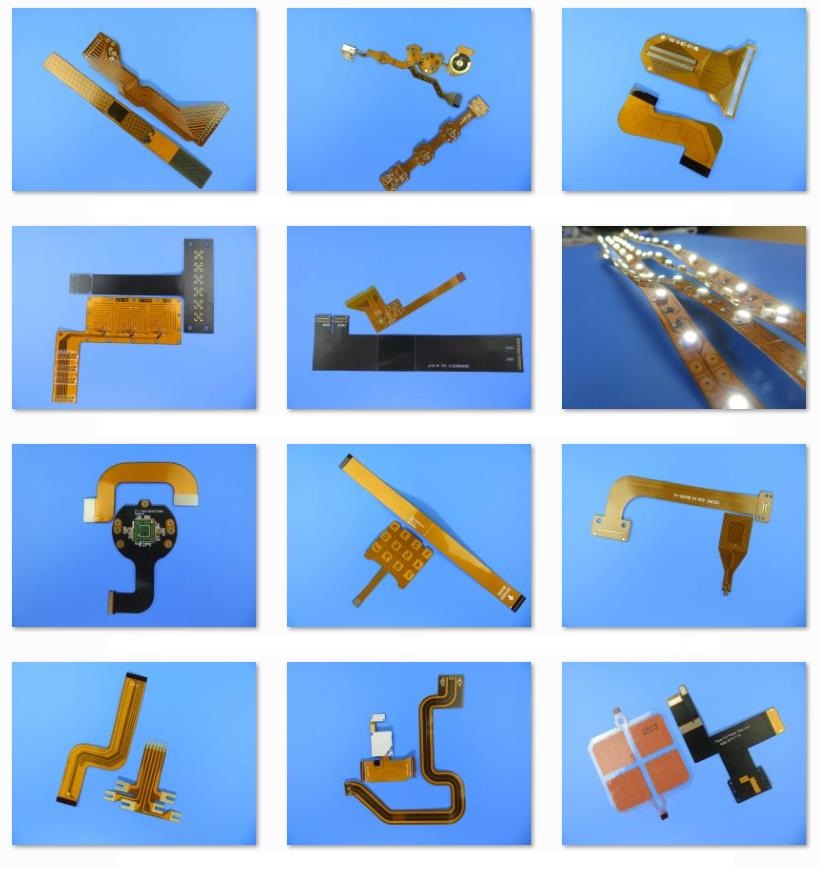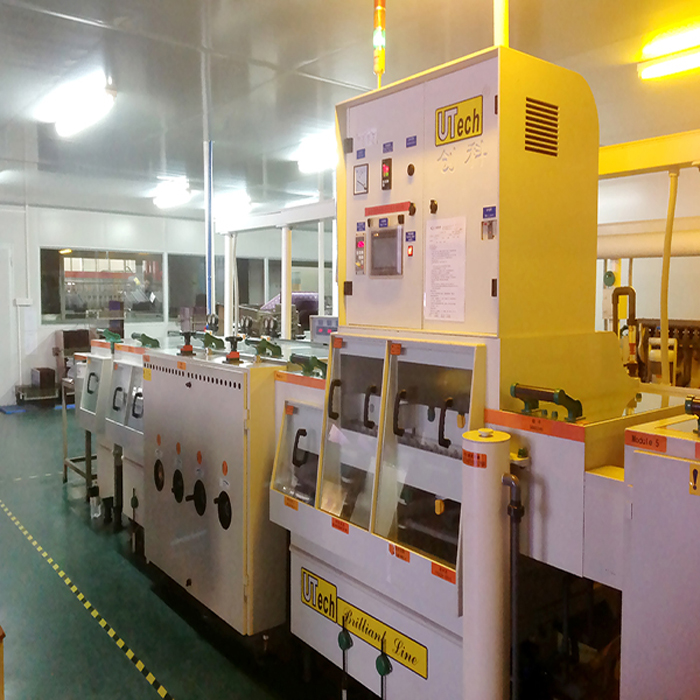| Surface Finishing: | Immersion Gold |
|---|---|
| Board Thickness: | 0.25mm |
| Copper Thickness: | 70 um |
| Base Material: | Polyimide 25um |
| Brand Name: | Bicheng Enterprise Limited |
| Min. Line Spacing: | N/A |
| Min. Line Width: | N/A |
| Min. Hole Size: | N/A |
| Model Number: | BIC-313-V313 |
| Place of Origin: | China (Mainland) |
| Coverlay Colour: | Yellow |
| Color of Silkscreen: | N/A |
Quick Details
Specifications
Clarifications of FPC
According to the combination of base material and copper foil, flexible circuit board can
Be divided into two types: flexible board with adhesive and flexible board without adhesive.
the price of non-adhesive flexible PCB is much higher than that of adhesive flexible PCB, but
Its flexibility, bonding force between copper foil and substrate and flatness of solder are also
Better than that of adhesive flexible PCB. so it is only used in the high demand situations,
Such as the: COF (CHIP on FLEX, flexible board with bare chip, the high flatness of the pad)
and so on. Because its price is high, most of the flexible PCBs used in the market are still
Adhesive flexible circuit board. Because the flexible circuit board is mainly used in the
Situation where bending is required, if the design or process is not reasonable, it is
Easy to produce micro-cracks, welding and other defects.
Economy of using FPC
If the circuit design is relatively simple, the total volume is small, and the space is suitable,
the traditional internal connection is much cheaper. Flexible circuits are a good design option
If the circuit is complex, processes many signals or has special electrical or mechanical
Requirements. When the size and performance of applications exceed the capacity of rigid
Circuits, flexible assembly is the most economical. A 12mil pad with a 5mil through hole
and a flexible circuit with 3mil lines and spacing can be fabricated on a thin film. Therefore,
It is more reliable to mount the chip directly on the film. There is no flame retardant that
Could be an ion source. these films may be protective and solidified at higher temperatures
to obtain higher glass transition temperatures. Flexible materials are less costly than rigid
Materials because they are free of connectors.
FPC Case: Dual Layer Flexible Circuit (FPC) Built on
2oz Polyimide for Interface Module
(Flexible printed circuits are custom-made products, the picture and parameters shown
Are just for reference)
General description
this is a type of 2 Layer flexible printed circuit (FPC) built on 2oz polyimide for the
Application of Interface Module.
Basic specifications
Base material: Polyimide 25m
Layer count: 2 layers
Type: Individual FPC
Format: 105mm x 42.3mm = 1 type = 1 piece
Surface finish: Immersion gold
Copper weight: Outer layer 70m/ Inner layer 0 m
Solder mask / Legend: Yellow coverlay / No.
Final PCB height: 0.25 mm
Standard: IPC 6012 Class 2
Packing: 100 pieces are packed for shipment.
Lead time: 10 working days
Shelf life: 6 months
Features and benefits
Reliability increased;
Controllability of electrical parameter design;
the end can be whole soldered;
SMT process is resistant to reflow soldering, resistant to rework;
Professional and experienced engineers check your production files
Competitive price;
No MOQ, low cost for prototypes and small runs quantity;
8000 types of PCB's per month;
Application
Thin-film switch, contact belt of inkjet printer, industrial control interphone, medical
Keypad soft board, contact belt of inkjet printer projector soft board
Specifications of Standard 2 Layer FCCL
Product Code Description
SF202 05 12 D T
SF202: Shengyi Adhesiveless FCCL Designation
05: PI Film Thickness, 05- 12.5m; 08-20m
12: Copper Foil Thickness, 12-12m, 18-18m
D: Double Sided
T:RTF copper; R- RA Copper; E- ED copper
FPC

Disposal prior to Solder mask

According to the combination of base material and copper foil, flexible circuit board can
Be divided into two types: flexible board with adhesive and flexible board without adhesive.
the price of non-adhesive flexible PCB is much higher than that of adhesive flexible PCB, but
Its flexibility, bonding force between copper foil and substrate and flatness of solder are also
Better than that of adhesive flexible PCB. so it is only used in the high demand situations,
Such as the: COF (CHIP on FLEX, flexible board with bare chip, the high flatness of the pad)
and so on. Because its price is high, most of the flexible PCBs used in the market are still
Adhesive flexible circuit board. Because the flexible circuit board is mainly used in the
Situation where bending is required, if the design or process is not reasonable, it is
Easy to produce micro-cracks, welding and other defects.
Economy of using FPC
If the circuit design is relatively simple, the total volume is small, and the space is suitable,
the traditional internal connection is much cheaper. Flexible circuits are a good design option
If the circuit is complex, processes many signals or has special electrical or mechanical
Requirements. When the size and performance of applications exceed the capacity of rigid
Circuits, flexible assembly is the most economical. A 12mil pad with a 5mil through hole
and a flexible circuit with 3mil lines and spacing can be fabricated on a thin film. Therefore,
It is more reliable to mount the chip directly on the film. There is no flame retardant that
Could be an ion source. these films may be protective and solidified at higher temperatures
to obtain higher glass transition temperatures. Flexible materials are less costly than rigid
Materials because they are free of connectors.
FPC Case: Dual Layer Flexible Circuit (FPC) Built on
2oz Polyimide for Interface Module
(Flexible printed circuits are custom-made products, the picture and parameters shown
Are just for reference)
General description
this is a type of 2 Layer flexible printed circuit (FPC) built on 2oz polyimide for the
Application of Interface Module.
Basic specifications
Base material: Polyimide 25m
Layer count: 2 layers
Type: Individual FPC
Format: 105mm x 42.3mm = 1 type = 1 piece
Surface finish: Immersion gold
Copper weight: Outer layer 70m/ Inner layer 0 m
Solder mask / Legend: Yellow coverlay / No.
Final PCB height: 0.25 mm
Standard: IPC 6012 Class 2
Packing: 100 pieces are packed for shipment.
Lead time: 10 working days
Shelf life: 6 months
Features and benefits
Reliability increased;
Controllability of electrical parameter design;
the end can be whole soldered;
SMT process is resistant to reflow soldering, resistant to rework;
Professional and experienced engineers check your production files
Competitive price;
No MOQ, low cost for prototypes and small runs quantity;
8000 types of PCB's per month;
Application
Thin-film switch, contact belt of inkjet printer, industrial control interphone, medical
Keypad soft board, contact belt of inkjet printer projector soft board
Specifications of Standard 2 Layer FCCL
| Specifications | Thickness (m) | Copper Type | Applications | |
| Polyimide Film | Copper Foil | |||
| SF202 0506DR | 12.5 | 6 | RA | Fine-line |
| SF20200509DR | 12 | 9 | RA | |
| SF202 0509DT | 12 | 9 | RTF | |
| SF202 0812DR | 20 | 12 | RA | Side switch |
| SF202 1012DR | 25 | 12 | RA | |
| SF202 0545DT | 12.5 | 45 | RTF | Wireless Charge |
| SF202 1045DT | 25 | 45 | RTF | |
| SF202 0550DT | 12.5 | 50 | RTF | |
| SF202 1050DT | 25 | 50 | RTF | |
| SF202 0570DT | 12.5 | 70 | RTF | |
| SF202 1070DT | 25 | 70 | RTF | |
| SF202 101850DT | 25 | 18, 50 | RTF | |
| SF202 101870DT | 25 | 18,70 | RTF | |
Product Code Description
SF202 05 12 D T
SF202: Shengyi Adhesiveless FCCL Designation
05: PI Film Thickness, 05- 12.5m; 08-20m
12: Copper Foil Thickness, 12-12m, 18-18m
D: Double Sided
T:RTF copper; R- RA Copper; E- ED copper
FPC
Disposal prior to Solder mask



